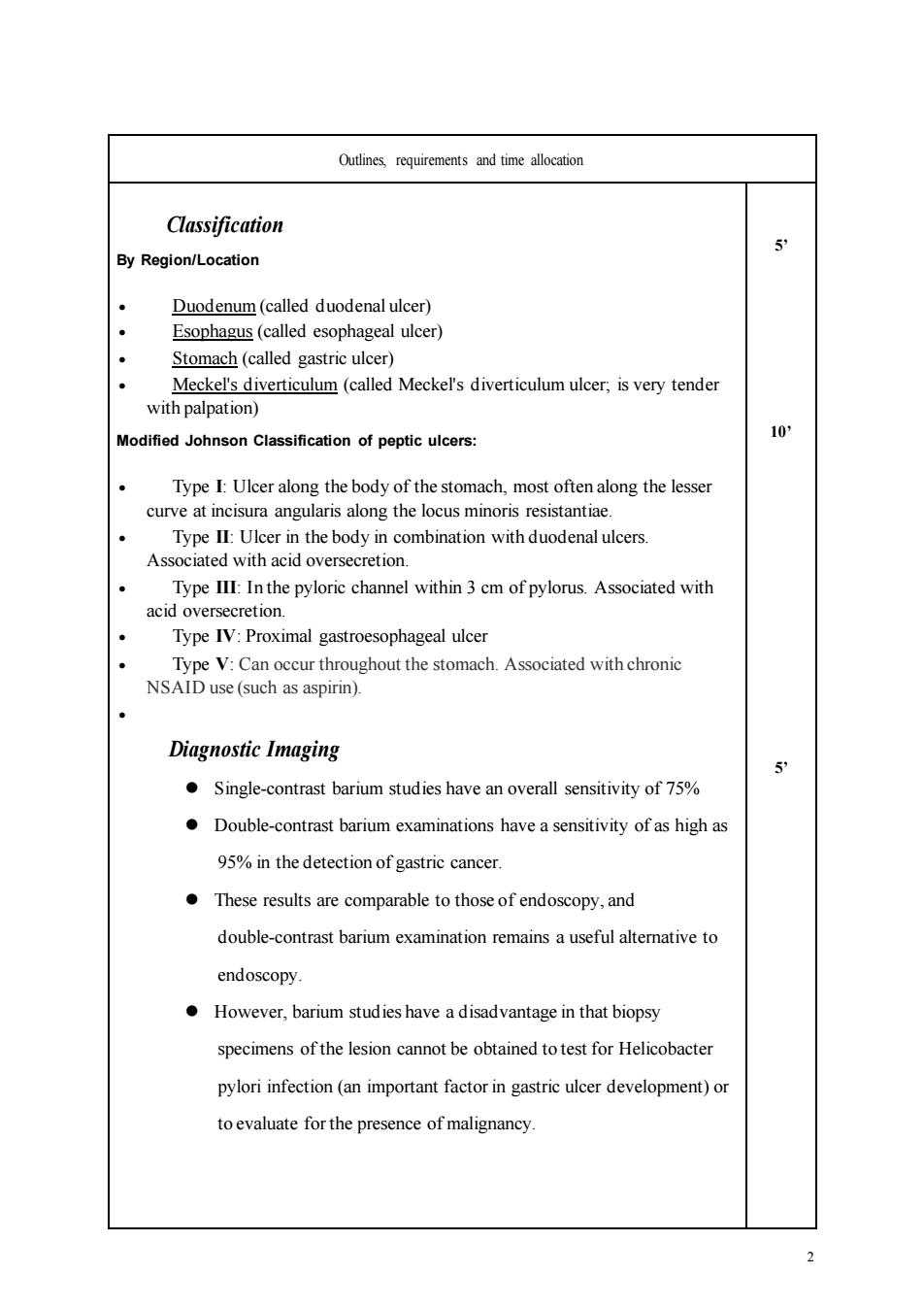正在加载图片...

Outlinesrequrements and time Classification By Region/Location Duodenum(called duodenal ulcer) Esophagus (called esophageal ulcer) Stomach (called gastric ulcer) Meckel's diverticulum (called Meckels diverticulum ulcer,is very tender with palpation) dified Johnson Classification of peptic ulcers: a Type I:Ulcer along the body of the stomach,most often along the lesser curve at incisura angularis along the locus minoris resistantiae. Type II:Ulcer in the body in combination with duodenal ulcers AsOcatedwithacidoweecretion Type III:Inthe pyloric channel within 3 cm of pylorus.Associated with acid oversecretion Type IV:Proximal gastroesophageal ulcer Type V:Can occur throughout the stomach.Associated with chronic NSAID use(such as aspirin). Diagnostic Imaging 5 Single-contrast barium studies have an overall sensitivity of 75% Double-contrast barium examinations have a sensitivity of as high as 95%in the detection of gastric cancer. These results are comparable to those of endoscopy.and double-contrast barium examination remains a useful altemative to endoscopy. However,barium studies have a disadvantage in that biopsy specimens of the lesion cannot be obtained totest for Helicobacter pylori infection(an important factor in gastric ulcer development)or toevaluate for the presence of malignancy.2 Outlines, requirements and time allocation Classification By Region/Location • Duodenum (called duodenal ulcer) • Esophagus (called esophageal ulcer) • Stomach (called gastric ulcer) • Meckel's diverticulum (called Meckel's diverticulum ulcer; is very tender with palpation) Modified Johnson Classification of peptic ulcers: • Type I: Ulcer along the body of the stomach, most often along the lesser curve at incisura angularis along the locus minoris resistantiae. • Type II: Ulcer in the body in combination with duodenal ulcers. Associated with acid oversecretion. • Type III: In the pyloric channel within 3 cm of pylorus. Associated with acid oversecretion. • Type IV: Proximal gastroesophageal ulcer • Type V: Can occur throughout the stomach. Associated with chronic NSAID use (such as aspirin). • Diagnostic Imaging ⚫ Single-contrast barium studies have an overall sensitivity of 75% ⚫ Double-contrast barium examinations have a sensitivity of as high as 95% in the detection of gastric cancer. ⚫ These results are comparable to those of endoscopy, and double-contrast barium examination remains a useful alternative to endoscopy. ⚫ However, barium studies have a disadvantage in that biopsy specimens of the lesion cannot be obtained to test for Helicobacter pylori infection (an important factor in gastric ulcer development) or to evaluate for the presence of malignancy. 5’ 10’ 5’